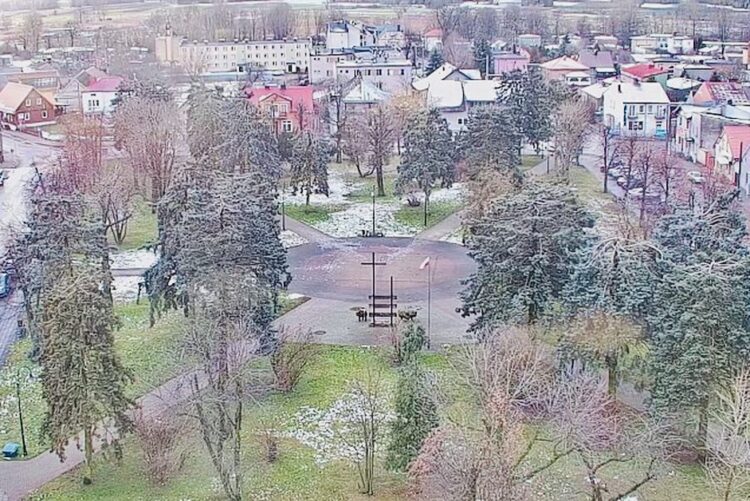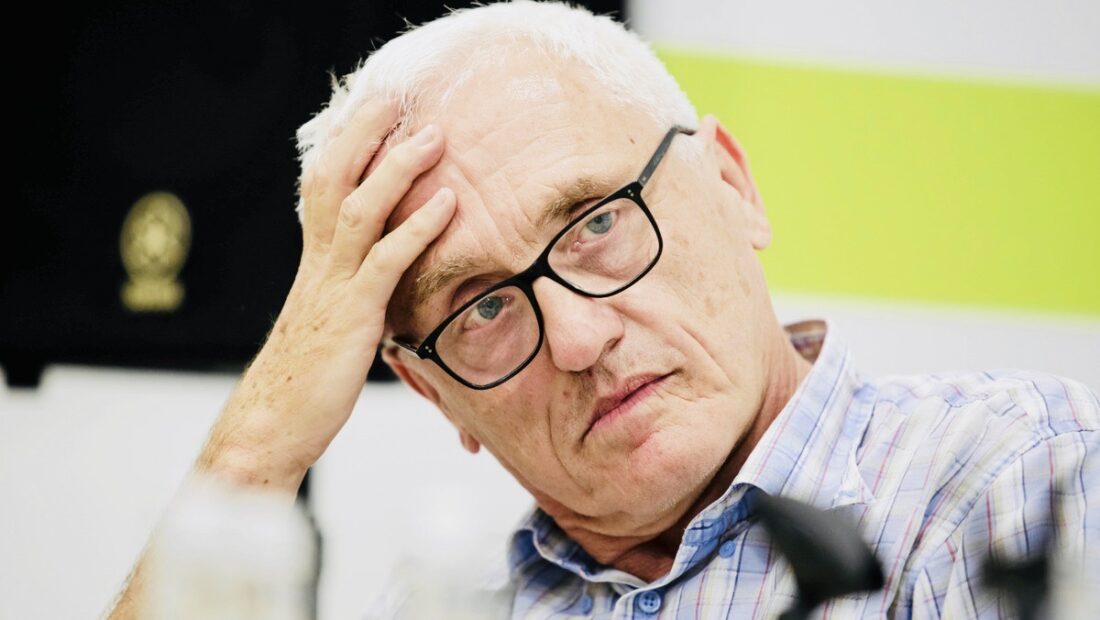Polish American historian Jan Gross caused an enormous uproar in Poland following the publication of the first edition of his explosive book, Neighbors: The Destruction Of The Jewish Community in Jedwabne, Poland.
Published in May 2000, and since translated into 13 languages, it generated an intensive nation-wide debate about collective memory and Polish-Jewish relations after the major Polish daily newspaper Gazeta Wyborcza carried an article about it.
While liberal-minded Poles heaped praised on Gross for having engaged in a profound reckoning with Poland’s difficult past, the backlash from nationalistic Poles steeped in traditional Catholic values was vociferous.
By his estimation, the current Polish government, headed by the right-wing Law and Justice Party, subscribes to the “false narrative” whereby the majority of Catholic Poles rushed to the aid of Jews during the Nazi occupation.
Yad Vashem, the Holocaust memorial in Jerusalem, has recognized more than 7,000 Poles as righteous gentiles. But due to the antisemitic animus prevalent in Polish society, and given the fact that Polish rescuers and their families could be executed for assisting Jews, most Poles focused on personal survival and remained largely indifferent as Jews were marginalized, demonized and killed in masse.
As Gross writes in a new preface of the paperback edition of Neighbors, published by Princeton University Press, “The manner in which mass murder in Jedwabne was carried out went against the grain of the national myth of victimization so central to Polish identity and rooted in the experience of so many Polish families.”
He adds, “Neighbors was a teachable moment about the ugliest face of Polish antisemitism, just as the murder of George Floyd was a teachable moment about institutionalized racist violence in America.”

The massacre in Jedwabne on July 10, 1941, perpetrated solely by Poles under the watchful eyes of German instigators, claimed the lives of some 1,600 Jewish men, women and children, who comprised 60 percent of its population.
“In Jedwabne, ordinary Poles slaughtered the Jews, very much as ordinary Germans from (a German police battalion) did in Jozefow, as documented in Christopher Browning’s Ordinary Men, writes Gross, a professor emeritus at Princeton University. “They were men of all ages and of different professions … And what the Jews saw, to their horror and, I dare say, incomprehension, were familiar faces. Not anonymous men in uniform, cogs in a war machine, agents carrying out orders, but their own neighbors, who chose to kill and were engaged in a bloody pogrom — willing executioners.”
Two years after the appearance of the Polish edition, the state-sponsored Institute of National Memory in Warsaw vindicated Gross in the face of malicious attacks against his scholarship.
As Gross writes in the preface, “The murder of Jedwabne Jews was planned in advance by local inhabitants, and many flocked into Jedwabne … from outlying villages to take part in it. The direct involvement of the few Germans present on the scene was limited to assisting in the early phase of the crime …”

Jedwabne, in northern Poland, was briefly occupied by the German army in 1939 and then handed over to the Red Army in compliance with Germany’s 1939 non-aggression pact with the Soviet Union. In the wake of Germany’s invasion of the Soviet Union on June 22, 1941, Jedwabne fell into Germany hands yet again.
The 20-month Soviet interregnum took a heavy toll on Jedwabne’s inhabitants, says Gross. “They were subjected to the process of sovietization, which affected all nationalities and classes, but the brunt of propaganda and Soviet repressions was directed against the Polish state. Local elites were arrested and deported. Private property was gradually taken over by the Soviet authorities. A vigorous campaign of secularization targeted all religious institutions and personnel.”
For obvious reasons, Jews preferred the Soviets to the Nazis. But as far as many Poles were concerned, Jews betrayed the motherland by cooperating with Soviet administers. “Allegedly the Jews collaborated with the Soviets at the expense of the Poles, and therefore an outburst of Polish antisemitism (came) “as a response to this experience.”
This perception was bound up with the malevolent view that Jews and communism were joined at the hip.

Prior to World War II, Jews and Poles in Jedwabne coexisted, albeit uneasily, because the entire region around it solidly supported the antisemitic National Democratic Party, led by Roman Dmowski.
Gross believes the massacre was coordinated by its mayor, Marian Karolak: “He is certainly the evil spirit of this tragedy.” According to local resident Mieczyslaw Gerwad, “The entire town council participated in this murder of Jews.”
Upwards of 92 men, or roughly 50 percent of Jedwabne’s male population, took part in the atrocity.
Szmul Wasersztajn, one of the few Jewish survivors, witnessed it. “Local hooligans armed themselves with axes, special clubs studded with nails, and other instruments of torture … and chased all the Jews into the street,” he recalled after the war.

Seventy five of the strongest Jews were ordered to disassemble and carry away a statue of Lenin the Soviets had erected in the center of the village, he went to say. After throwing pieces of the monument into a pit, the Jews were butchered and tossed into the same hole.
A similar fate befell still more Jews. “Beards of old Jews were burned, newborn babies were killed at their mothers’ breasts, people were beaten murderously,” Wasersztajn testified.
The remainder of the Jewish residents were herded into a barn, which was doused with kerosene and set alight. When the fire subsided, perpetrators pulled gold teeth from corpses. Edward Sleszynski, whose father’s barn was used to incinerate Jews, told postwar interrogators that Poles “carried out this deed. Germans participated only in photographing.”
Jews who tried to escape into nearby fields were usually caught. “It was difficult to get out of town without being noticed, as small vigilante groups of peasants were milling around trying to ferret out and catch hiding and fleeing Jews,” says Gross.
The few survivors who returned to Jedwabne were driven into the Lomza ghetto by the Nazis.
Antonia Wyrzykowski, a local Polish woman who helped Jews on that day of infamy, was so stigmatized by Poles that she immigrated to the United States. “The son of Antonia Wyrzykowski’s nephew, who remained near Jedwabne, was called a ‘Jew’ whenever his classmates got angry,” says Gross.
Mulling over the reasons why Poles murdered Jewish neighbors, he writes, “I would think it very probable that the desire to rob Jews once and for all — rather than, or alongside with, atavistic antisemitism — was the real motivating force that drove (some Poles) to organize the killing.”
Yet, as Gross points out, the massacre in Jedwabne was not unique in Poland. Eyewitnesses report that 1,500 and 1,200 Jews were respectively killed by Poles in the neighboring villages of Radzilow and Wasosz.

In 1949, 22 Poles were arrested and charged with participating in the pogrom. Several of the pogromists were imprisoned, one was condemned to death, and the rest were found not guilty and released.
Gross is hardly surprised by the unsatisfactory outcome of these trials. As he puts it, “Evidently, it was in no one’s interest in Stalinist Poland to underscore Jewish wartime suffering at the hands of the Poles.”

